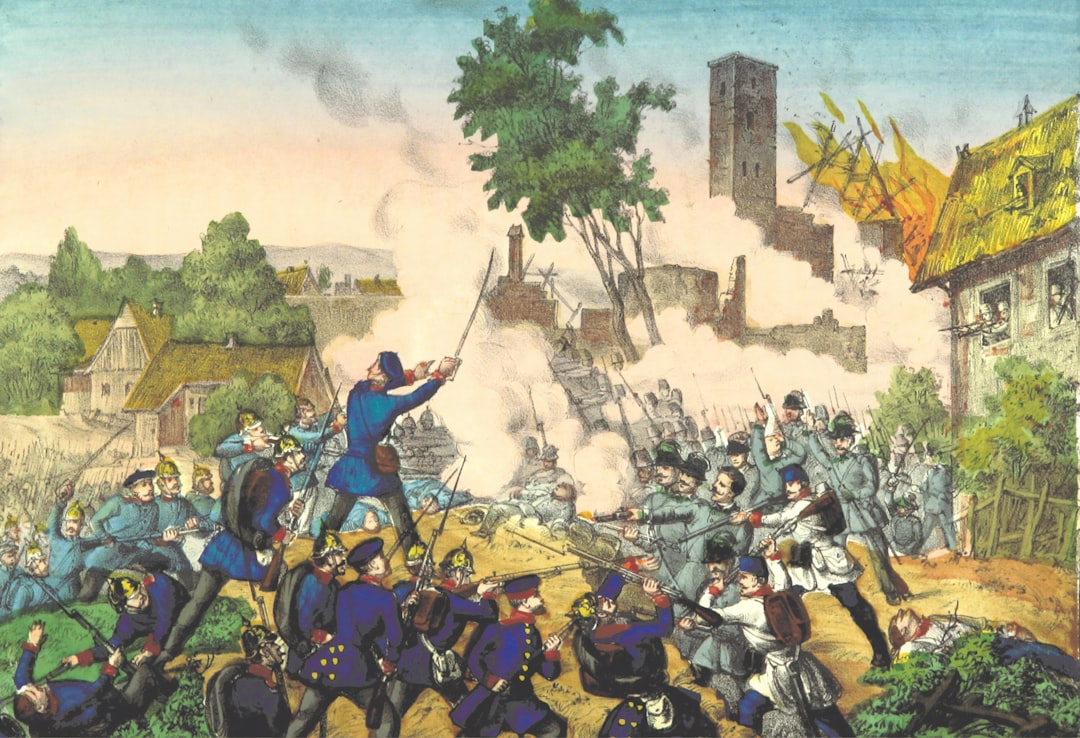Introduction
The Pacific Northwest has a rich history, steeped in tales of exploration, discovery, and conflict. For centuries, the indigenous people of the region had developed complex societies, each with their unique customs, beliefs, and governing structures. But when Europeans arrived on the scene in the late 18th century, the balance of power in the region was irrevocably altered. The resulting conflicts and alliances would shape the future of the Pacific Northwest, culminating in a brutal war that would be decided by a single battle.
The Pacific Coast’s Alliance: An Overview
The Pacific Northwest region of North America was a site of complex interactions between indigenous peoples and European settlers in the 19th century. One key aspect of this history was the alliances that formed between indigenous chieftains and European traders, which often had significant political and economic implications. However, these alliances were not without conflict, as competition for resources and power often led to violence and warfare. The Battle of Seattle, fought in 1856, was a significant moment in this history, as it marked a turning point in the Puget Sound War and solidified the indigenous-European alliance in the region. The fur trade played a central role in the rise of indigenous chieftains and the formation of these alliances, highlighting the complex and dynamic nature of the region’s history.
The alliances between indigenous chieftains and European traders were not always stable or harmonious. As European settlements expanded and resources became scarce, tensions rose and conflicts erupted. The aftermath of the Battle of Seattle had a profound impact on the region, as the indigenous-European alliance emerged as the dominant political and economic force. However, the legacy of these alliances and conflicts is still felt today, as indigenous communities continue to fight for their sovereignty and rights. The story of the chieftains of the Pacific Coast’s alliance with Europe is a complex and nuanced one, reflecting the broader history of colonialism and its impacts on indigenous peoples.
Europeans’ Alliance with Native Chieftains
The arrival of Europeans on the Pacific Northwest coast in the late 18th century marked the beginning of a new era for the region. Initially, contact was characterized by curiosity, trade, and diplomacy, with Europeans seeking to establish relationships with the indigenous peoples. These early encounters would lead to the formation of powerful alliances between European traders and the indigenous chieftains who controlled access to the region’s resources.
The Fur Trade and the Rise of Chieftains
The fur trade was the driving force behind European interest in the Pacific Northwest, and it had a profound impact on the region’s indigenous societies. As the demand for furs grew and fur trade continued to expand, so did the power and influence of the indigenous chieftains, setting the stage for the alliances and conflicts that would shape the future of the Pacific Northwest. Through strategic marriages, political alliances, and military might, these chieftains rose to prominence and established themselves as the dominant forces in the region.
Conflict and War: Europeans vs Natives
Despite the alliances between Europeans and indigenous chieftains, conflict was inevitable. The competition for resources and power would lead to a series of wars and battles that would shape the future of the region. The most significant of these conflicts was the so-called “Puget Sound War,” a brutal conflict that would ultimately be decided by a single battle. The legacy of these alliances and conflicts continues to be felt in the Pacific Northwest to this day, as indigenous communities fight for their rights and sovereignty while navigating the ongoing impact of colonization.
The Battle of Seattle and its Aftermath
The Battle of Seattle was sparked by tensions over land ownership and resource access between American settlers and indigenous peoples The Battle of Seattle, fought in 1856, was a turning point in the Puget Sound War. It pitted a coalition of indigenous warriors and their European allies against a group of American settlers and soldiers. The battle was fierce and brutal, with both sides suffering heavy losses. In the end, however, the indigenous and European coalition emerged victorious, cementing their alliance and securing their control over the region.
The Legacy and Impact of the Alliance
The alliance between European traders and indigenous chieftains had a lasting impact on the Pacific Northwest. It shaped the region’s politics, economics, and social structures, setting the stage for the development of modern-day British Columbia, Washington, and Oregon. Today, the legacy of the alliance can be seen in the region’s rich cultural diversity, as well as in the ongoing struggles for sovereignty and self-determination among indigenous peoples.
Conclusion
The alliance between European traders and indigenous chieftains in the Pacific Northwest was a complex and often brutal affair. While it had a profound impact on the region’s history, its legacy is still being felt today, as the people of the Pacific Northwest continue to grapple with the consequences of this pivotal moment in their shared past. The alliance between the Chieftains of the Pacific Coast and European settlers marked a turning point in the history of the region and had a profound impact on the lives of the native people.


